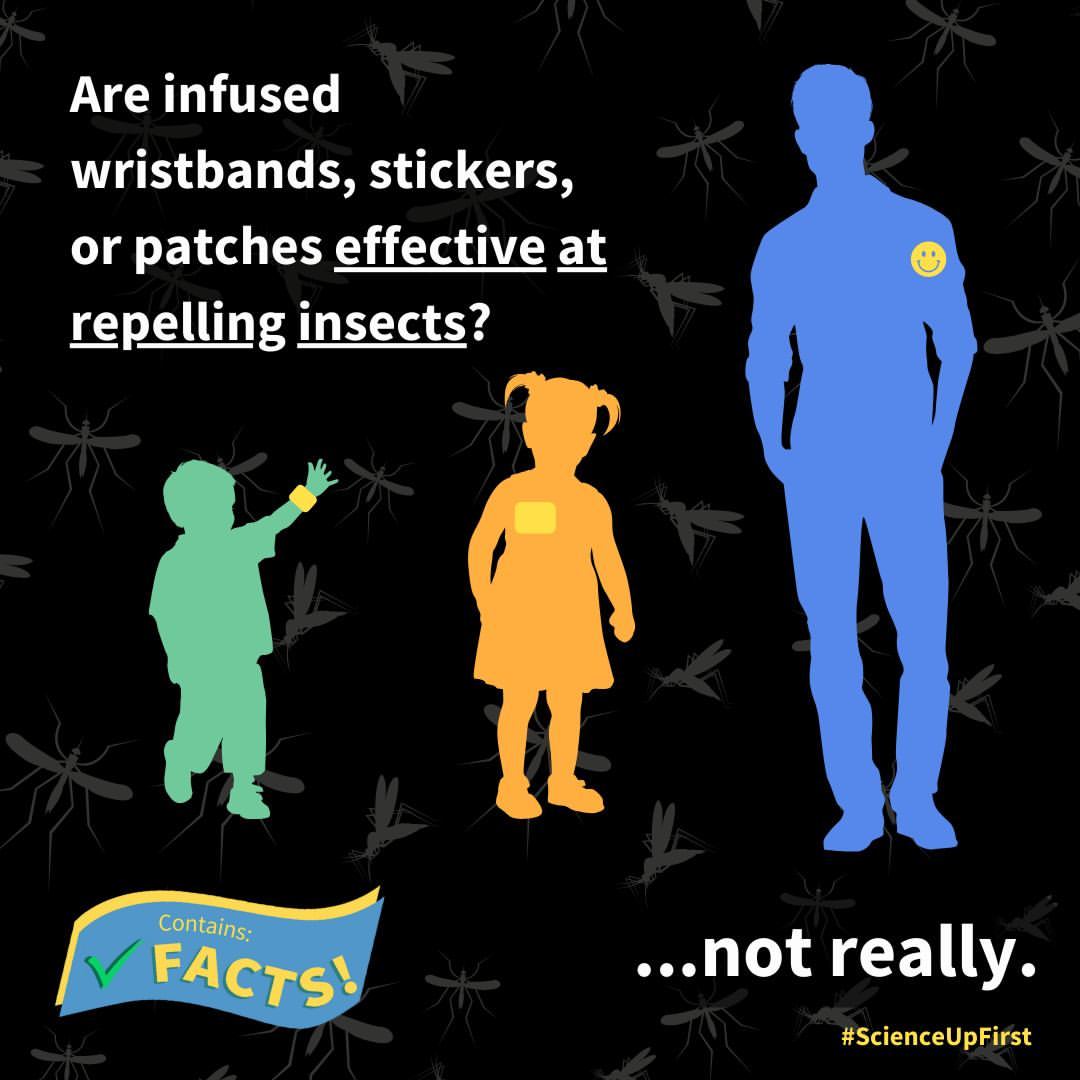
Female mosquitoes rely on a combination of senses to locate humans. They detect the carbon dioxide we exhale, sense our body heat, and are drawn to specific odors emitted from our skin (1,2). Insect repellents work by masking these odors, making it difficult for mosquitoes to find and bite us (3,4).
DEET, icaridin (picaridin), and P-Menthane-3,8-diol (PMD) are well-known and effective mosquito repellents (5,6). Other plant-based options such as citronella, oil of lemon eucalyptus, and other essential oils could also provide some level of protection, although typically for shorter periods of time (3,6,7,8,9,10,11).
Most personal repellents are applied as sprays, aerosols, or lotions directly to the skin. However, there’s been a rise in alternative options like wristbands, stickers, and patches marketed as safer, and more natural (12,13).
While these products might seem appealing, studies have shown they provide minimal, if any, protection against mosquito bites (3,6,14,15). Even if infused with insect repellent, these products don’t release enough of the active ingredient to effectively repel mosquitoes (3,12).
Mosquitoes are the deadliest animal on Earth, transmitting diseases that cause over 400,000 deaths globally each year (16). While these diseases primarily affect tropical and subtropical regions, Canada is also at risk from mosquito-borne illnesses like West Nile virus, a risk that is increasing with climate change (16,17,18).
To protect yourself, DEET, PMD, and icaridin-based repellents provide the best and longest protection (3,5). For additional protection, cover as much exposed skin as possible with tucked-in, loose, light-coloured clothes made from fabric like nylon or polyester – adults can wear permethrin-treated clothing too (19).
Sources: https://tinyurl.com/SUFInsectRepellentPatch
Share our original Tweet!
Although bracelets, stickers or patches may look attractive, they offer minimal, if any, protection against mosquito bites.
— ScienceUpFirst | LaScienced'Abord (@ScienceUpFirst) August 21, 2024
We' explain it all to you here 👇 https://t.co/PsAqiMsTDH#ScienceUpFirst pic.twitter.com/7hDip8MIA3
View our original Instagram Post!



